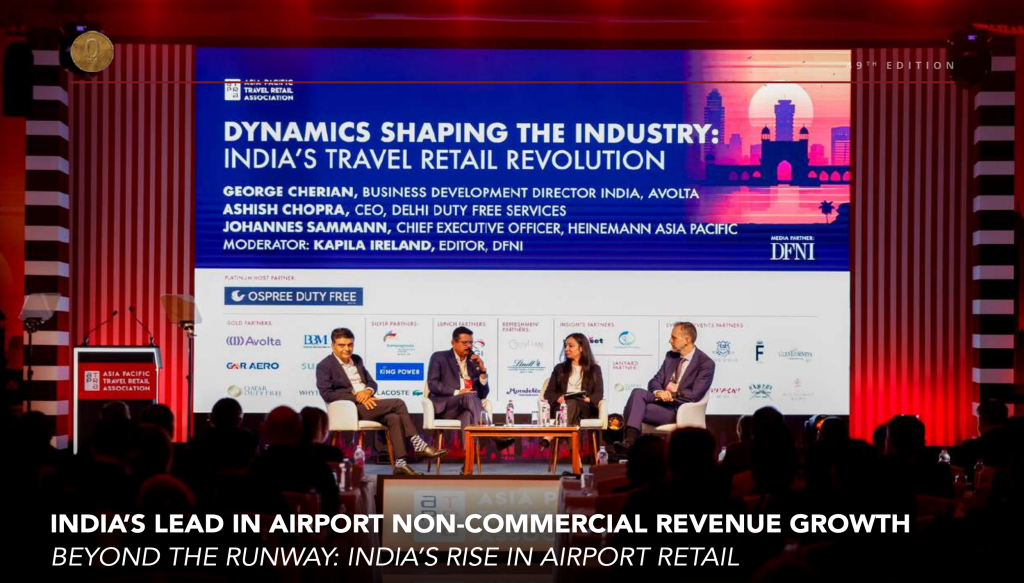
Sunil Tuli
President of APTRA
Sunil Tuli, President of the Asia Pacific Travel
Retail Association (APTRA) & Group Chief
Executive, King Power Group (Hong Kong) shares
his perspective on the importance of travel retail
within the Indian aviation industry.
The Travel Retail and Duty Free market in India is
the fastest growing in the global industry. The
sector plays a critical role in the country’s aviation
market, providing essential non-aeronautical
revenue for airports and playing a pivotal role in
the government’s ambitions for growth. The
surge in the middle classes and in Gen Z
constitute a powerful and appealing consumer
target base for luxury brands, airlines and
airports. The increasing demand for air travel
from consumers keen to travel the world has also
made India a priority source market for tourists in
many countries who are keen to invest in-market
to attract even greater numbers of Indian visitors.
The number of operational airports across the
federation has more than doubled from 74 in
2014 to 157 in 2024, and the government claims
that this could increase to almost 400 by 2047.
India’s Public-Private Partnership (PPP) model is
further expanding the number of new airports
and airport expansions, with over a dozen
currently operating this model, and the Ministry
of Civil Aviation is developing PPP modalities for
the privatisation of 25 airports under the National
Monetization Pipeline plan.
The government’s long-term strategic planning
programme is a comprehensive, joined-up
approach that aims to develop transport
infrastructure by recognising the
interdependence of air, road, rail and water
transport. Aviation is a key priority and is founded
on the UDAN policy, rapidly expanding domestic
air travel accessibility to the wider population.
Building on the successful expansion of major
airports, this policy has significantly increased
connectivity to smaller Tier 2 and 3 cities and
remote areas, making flying an everyday
convenience accessible to a much larger
proportion of the population.
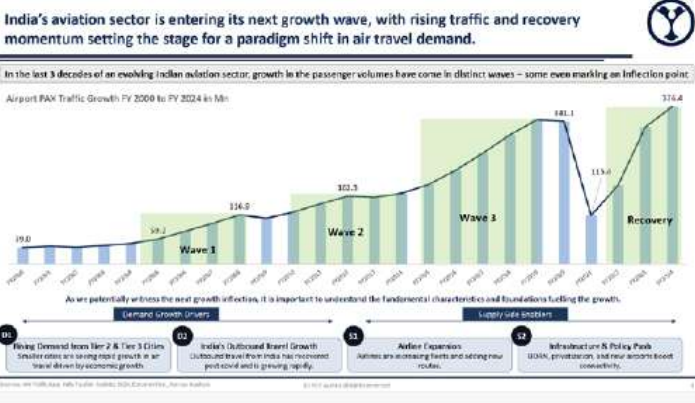
- Traffic totalled 376.4m in FY2024 (domestic and international)
- Non-metro airports account for nearly 40% of total passenger traffic, with 146 million passengers in FY24.
- Outbound travel is projected to reach 52 million by 2029, with a CAGR of 11.5%
The ambition to provide financially viable
regional flight routes with capped airfares is
inevitably complex in its influence on the market,
but these routes aim to connect over 100 smaller
airports in towns to India’s major cities. This also
includes seaplanes and helicopter services.
Similarly, the National Air Cargo Policy has aided
the development and expansion of the country’s
cargo operations, strengthening India’s position
as a logistics powerhouse and, linking with the
huge focus placed on the technology sector and
education – especially in expanding the female
workforce- is facilitating the rapid growth of
e-commerce. One remarkable example of the
success of the strategy is the fact that the
comprehensive planning and new thinking
behind India’s growth of its aviation system has
resulted in 15% of India’s pilots being female, far
above the global average of around 5%.
Government initiatives like UDAN and regional
airport privatisation are unlocking new markets,
with non-metro airports now accounting for
nearly 40% of total passenger traffic. Outbound
travel is also surging, with international
departures expected to reach 52 million by 2029,
positioning India as the fastest-growing source
market in South Asia. The expansion is unlocking
new market access and bringing emerging
traveller segments into the market and
influencing retail trends from Dubai to Denpasar.
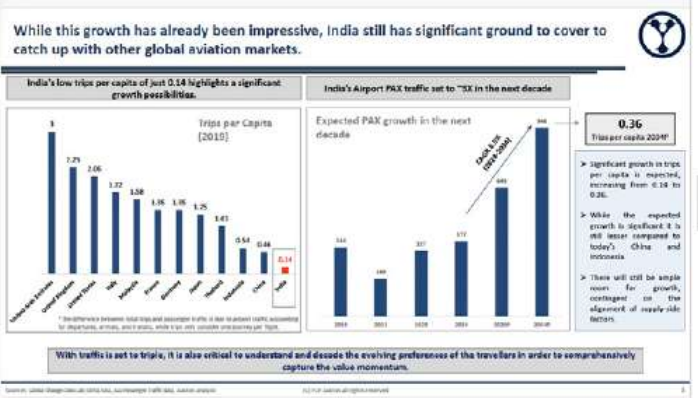
While India’s growth is clearly impressive, it is
rising from a relatively low base and, in everything
from earnings per capita to annual passenger
numbers and flights per capita, the country still
has far to go to overtake China, for example – but
it is a huge country with an increasingly affluent,
young population that prioritises international
travel and discovery.
India’s airports – transforming capacity and the
passenger experience
Central to the country’s aviation focus is the
positioning of India’s major airports as hubs
connecting the East and the West. The
international airport experience has been
transformed in India, led by stunning locations
such as Delhi Indira Gandhi International Airport
(profiled in Airport World, Issue 2, 2025) where
operator DIAL has developed what it describes as
‘a bigger, better, smarter, and future-ready’
airport by blending a capacity of 100 million per
annum (with the potential to rise to 140 million)
with quality in its ASQ award-winning passenger
experience. The airport has a continuing
programme of major developments planned for
the next decade to strengthen its role as India’s
‘flagship hub’.
Similarly, Bengaluru International Airport has
created an even more expansive transformation,
setting a global benchmark with new levels of
customer service in the remarkable T2 – the
‘terminal in a garden’ – that shares a stunning
celebration of the city’s culture, heritage and
people. Major investment developments at
Mumbai, Chennai, Bengaluru, Kolkata, and
Hyderabad are also strengthening India’s
ambition to be a competitive hub to the GCC.
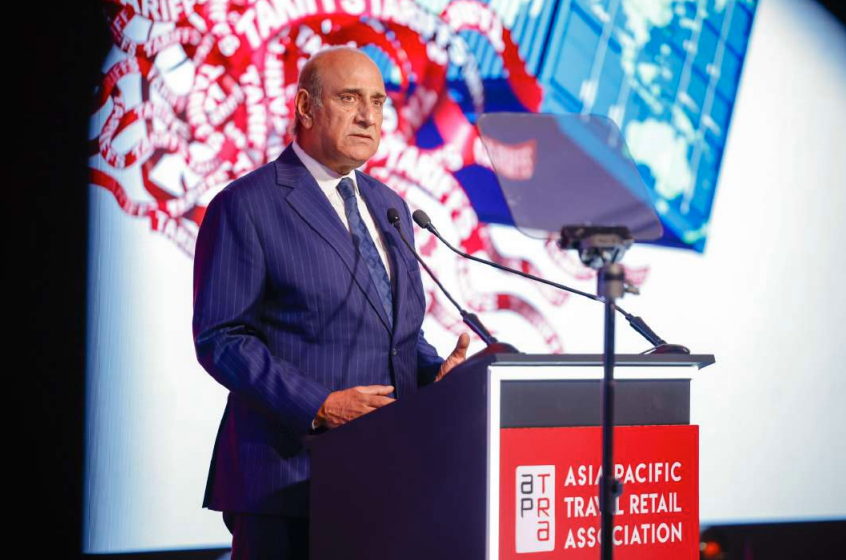
Leading the way for infrastructure essential to
achieve India’s growth ambition is Navi Mumbai,
the largest of seven major new population centre
developments, supported by a new airport, Navi
Mumbai International Airport, that will start
operating commercial flights in the next few
months following its official inauguration in June.
With an initial capacity of 20 million passengers, it
will expand to 50 million by mid-2029 following
the addition of another terminal and runway.
Subsequent planned phases will reach an
eventual goal of 90 million pax by 2036.
Jewar Airport, Noida, with six runways planned, is
envisioned to become India’s largest airport and,
though delayed, the first phase is scheduled to
open soon and will help ease the pressures on
capacity at Delhi Indira Gandhi International
Airport.
Airline growth
In tandem with the country’s transport policy,
India’s airlines leading the global industry in
aircraft orders to utilise those airports, collectively
placing orders for approximately 1,700 aircraft to
be delivered by 2030.
Last December, Air India augmented its existing
mandate of 470 planes by an additional 100,
reflecting its confidence in the long-term market.
With new airports and new aircraft come new
travellers – including an anticipated year-on-year
growth rate of 5-6% in traffic.
Non-Aeronautical Revenue opportunities
With those 40,000 new passports expanding the
potential travel market every single day, Indians
are passionate about international travel, and this
desire for new experiences brings them right to
Travel Retail’s shop window. India’s middle classes
have a passion – and the wallet – to travel the
world. Consumer spending abroad has reached
record levels, and the good news for the aviation
and travel retail sectors is that their spending
priority is foreign travel, increasing from 37% of
spend in 2020 to 53.6% in 2024, a rise of almost
25% year-on-year to 17 billion dollars in 2024.
The dynamic landscape of travel retail in India is
undergoing a significant transformation. With
Arrivals stores accounting for approximately 80%
of travel retail income generation in the country,
the product assortment is rapidly expanding
beyond traditional categories such as spirits and tobacco.
Beauty is emerging as a strong
contender for the leading category, while
confectionery, wellness, toys and tech are steadily
gaining retail prominence at major airports.
Indian travellers are increasingly drawn to luxury
brands that offer personalisation, immersive
experiences and contemporary cultural
relevance. To meet these evolving consumer
expectations, retailers are elevating their
offerings, ensuring they stand out from other
retail channels to deliver a differentiated
shopping experience.
Evolving Consumer Behaviour
- Rising incomes and aspirations are reshaping travel and retail consumption patterns in India.
- Gen Z and Millennials are key influencers, prioritising experiential and ethical consumption.
- The affluent class is expected to double, driving demand for luxury and discretionary spending.
- Consumers are shifting from price-driven to brand-conscious and experience-oriented purchasing behaviours.
- Digital convenience and sustainability are becoming essential for engaging modern travellers.
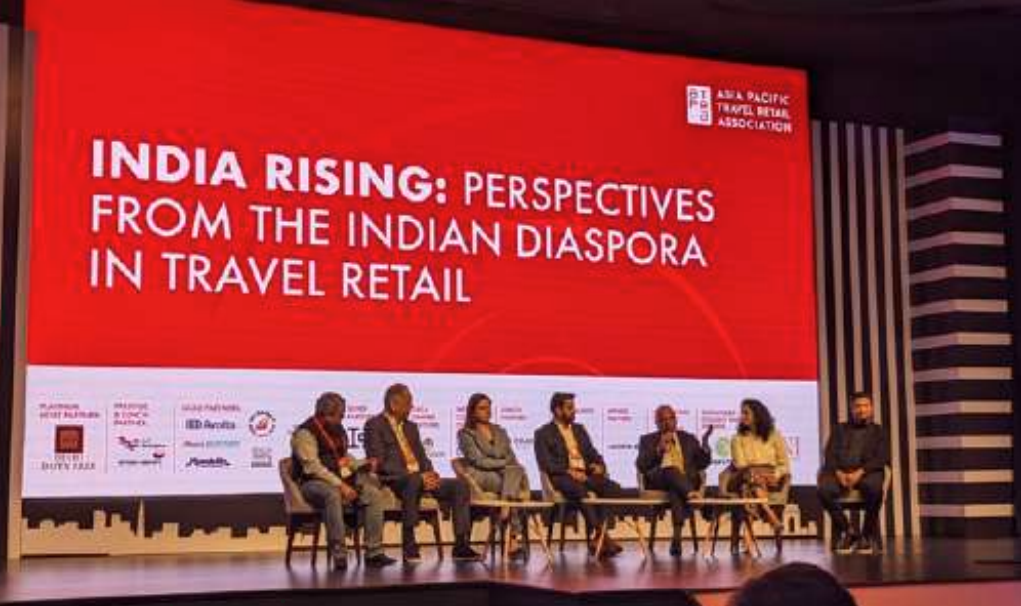
www.aptra.asia
India’s Gen Z, already numbering 380 million –
surpassing the entire population of the USA – is
rapidly gaining influence. By 2035, this
demographic is projected to become the largest
of its kind globally and is expected to drive 50%
of consumer spending decisions in India.
This is a perfect expression of the new India. A
new mindset among the middle-class consumers
and a signal of their determination to not only
enjoy new travel and consumption experiences
but also to celebrate an exciting, more global
citizenship.
Among India’s new middle class, there’s surging
interest in brands, especially international icons.
Just as those middle-class consumers are fuelling
India’s economic rise, so too will they play a lead
role in driving the future success of India’s
aviation sector.
APTRA represents the travel retail industry across
over 45 markets in Asia Pacific with advocacy and
regulatory services, networking, knowledge and
research through events such as the APTRA India
conference scheduled for Bangalore in March
2026 and the APTRA North Asia Forum in Hong
Kong 3-5 December 2025.

